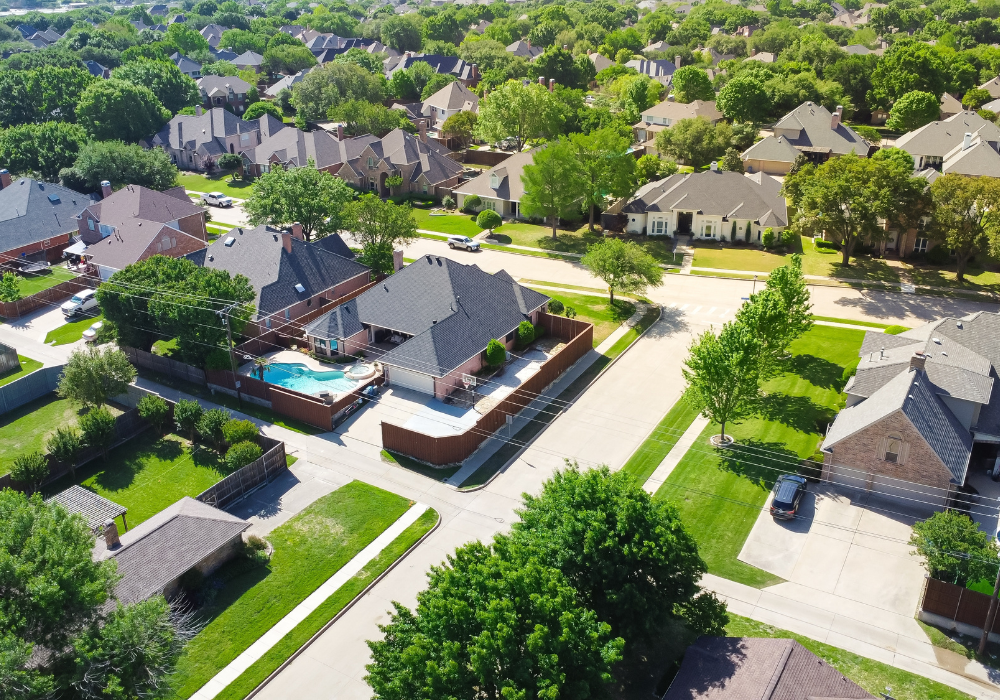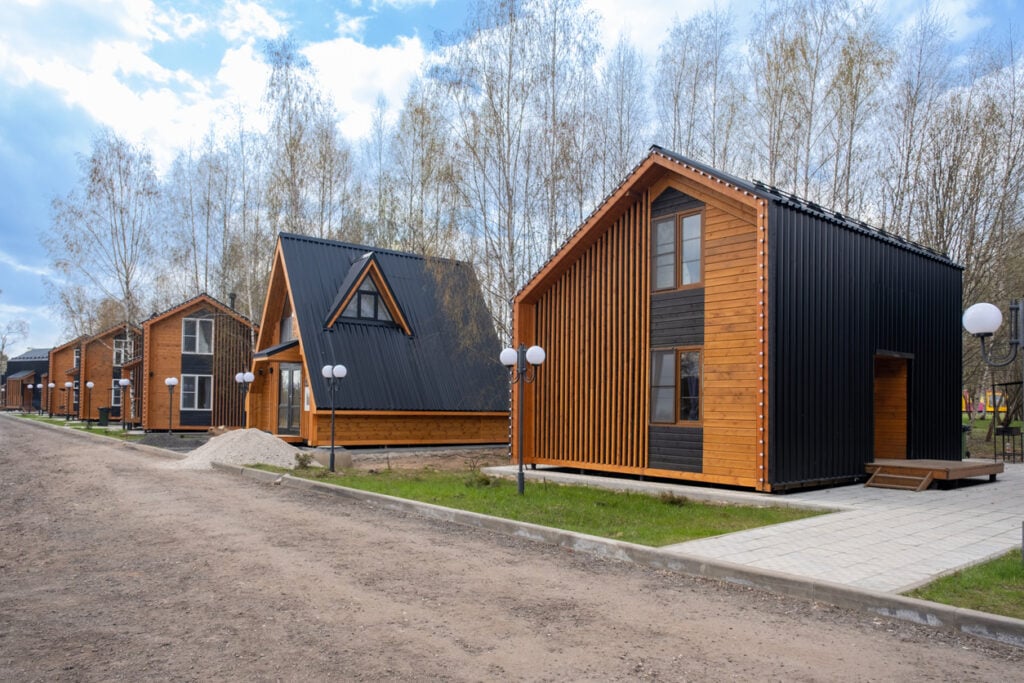Both Baby Boomers and Gen Z prioritize affordable, flexible, and community-focused housing options today.

While often seen as generations with contrasting views, Baby Boomers and Generation Z share notable common ground in their housing preferences. Both groups emphasize affordability, favor homes that offer flexibility and natural light, and seek communities with strong social connections and accessible amenities. Understanding these shared priorities helps bridge generational divides and offers insight into housing trends that appeal across age groups, highlighting values rather than differences.
1. Prioritize affordable housing options within accessible urban neighborhoods.

Affordable housing plays a crucial role for both Baby Boomers and Gen Z, who seek affordability in urban spaces where opportunities abound. For Boomers, this often means downsizing to manage expenses, while Gen Z looks to enter the housing market without staggering debt.
The trend of choosing urban locales arises from a desire for proximity to vibrant job markets and cultural amenities. Both generations place value on cutting commutes and living where life happens, underscoring shared values that influence housing trends across generations.
2. Value spacious layouts that accommodate both privacy and shared living.

Modern buyers across generations appreciate spacious home layouts. These layouts allow for privacy and communal interactions. Boomers might look for separate rooms for visiting family, while Gen Z envisions multi-use spaces that accommodate roommates or co-working setups.
While preferences converge on the idea of space, motivations differ slightly: Boomers may lean towards spaces that create retreat-like environments, while Gen Z values versatility. This intersection of privacy and community reflects a universal need for balance in daily living.
3. Seek homes with ample natural light and open, airy designs.

Natural light and open designs evoke feelings of openness and energy in a home. Both Boomers and Gen Z gravitate towards airy layouts that enhance mood and well-being. Large windows and open plans are popular, inviting a seamless flow between indoors and outdoors.
Boomers often associate these features with comfort and ease of living, while Gen Z appreciates the aesthetic appeal and potential for creativity in decorating. Light-filled homes reflect both generations’ desire for bright, uplifting environments that foster connection to the outside world.
4. Look for energy-efficient features to reduce utility costs and waste.

Energy efficiency ranks high on the list for both Boomers and Gen Z, who aim to cut costs and reduce environmental impacts. Sustainable features, like solar panels or smart thermostats, appeal across generations for their long-term savings and eco-friendly impact.
This shared interest in efficiency extends beyond cost. Boomers may focus on reducing their carbon footprint as part of legacy thinking, whereas Gen Z sees green living as a baseline expectation. The focus on sustainable living reshapes housing demands across age groups.
5. Favor locations near reliable public transportation and local amenities.

Living near reliable public transportation and local amenities embodies a shared goal for both Baby Boomers and Gen Z. Accessibility to buses, trains, and essential services remains essential, minimizing reliance on cars and expanding adventure within the city.
Public transit offers convenience and freedom, enabling Boomers to enjoy retirement in bustling areas without having to drive. Meanwhile, Gen Z leverages these connections for career access and urban exploration, reinforcing a desire for efficiency and connectivity.
6. Appreciate properties with flexible spaces adaptable to changing needs.

Flexibility in home design meets the evolving demands of life. Both Boomers and Gen Z appreciate homes with spaces that adapt to changing needs, such as a room that shifts from an office to a guest room. Creativity in layout supports varied life stages.
Boomers might convert spare bedrooms into hobby spaces, showcasing freedom in adaptation. Gen Z, however, may focus on spaces that support freelance work or creative endeavors. Flexibility in design enables buyers to curate their spaces to suit personal and family needs.
7. Desire low-maintenance homes ideal for busy lifestyles across generations.

Low-maintenance homes offer relief for those with packed schedules, appealing to both generations. Boomers desire manageable spaces that allow more time for leisure, freeing them from intense upkeep, while Gen Z seeks simplicity, correlating with lifestyle and work flexibility.
Streamlined designs and durable materials attract both age groups, minimizing home chores. Boomers appreciate the extra relaxation hours, while Gen Z aligns with the minimalist trend that favors experience over ownership. Efficiency in living translates to more time for pursuits beyond walls.
8. Emphasize safe, walkable communities with green spaces and parks nearby.

Safe, walkable communities with green spaces bring a shared sense of tranquility and health. Boomers and Gen Z flock to neighborhoods where nature is accessible, offering respite from urban clatter and inviting leisurely strolls or vibrant outdoor gatherings.
For Boomers, such areas provide peace and a chance to stay active, whereas Gen Z enjoys ecological benefits and recreational spaces. This cohesive link underscores a universal appreciation for environments that promote physical activity and offer rejuvenation.
9. Opt for modern kitchens that support cooking and social gatherings.

Modern kitchens serve as multifunctional hubs for both Boomers and Gen Z, accommodating culinary exploration and socializing. Spacious countertops, energy-efficient appliances, and inviting designs create a space to savor meals and host gatherings.
For Boomers, kitchens represent a continuation of tradition and a place for shared family stories. Gen Z sees them as creative spaces for shared meals and social media-worthy moments. Kitchens mirror modern life, bridging generational bounds through food and connection.
10. Choose neighborhoods with strong community engagement and neighborliness.

Neighborhoods that foster community engagement attract Baby Boomers and Gen Z alike. Both generations value environments where social connections thrive, whether through clubs, neighborhood watch programs, or local events that cultivate a sense of belonging.
Boomers appreciate engagement that enriches their legacy and personal fulfillment, ensuring connections during retirement. Meanwhile, Gen Z seeks communities that offer collaboration and shared interests. Reciprocal investment in community sustains vibrant living experiences.
11. Value access to quality schools and educational resources for families.

Quality schools and educational resources attract families, resonating with both Boomers housing family visits and Gen Z planning for future children. Educational excellence remains a cornerstone, granting opportunities for growth and a nurtured environment.
While Boomers enjoy seeing family members thrive, Gen Z might focus on long-term planning for their own families. The intergenerational commonality lies in the value placed on educational advancement, strengthening community ties through a mutual aim for lifelong education.
12. Seek balanced settings that blend urban convenience and peaceful retreat.

Urban structures offering both the excitement of city life and the peace of tranquil retreats appeal equally to Boomers and Gen Z. This balance allows easy access to cultural amenities without sacrificing serene living environments for quieter, personal moments.
Boomers appreciate proximity to cultural establishments and quiet spots for relaxation, ensuring comfort in later life. Gen Z values the dynamic vibrancy coupled with a haven-like home environment. This harmonic meeting of convenience and calm shapes appealing lifestyles regardless of age.
